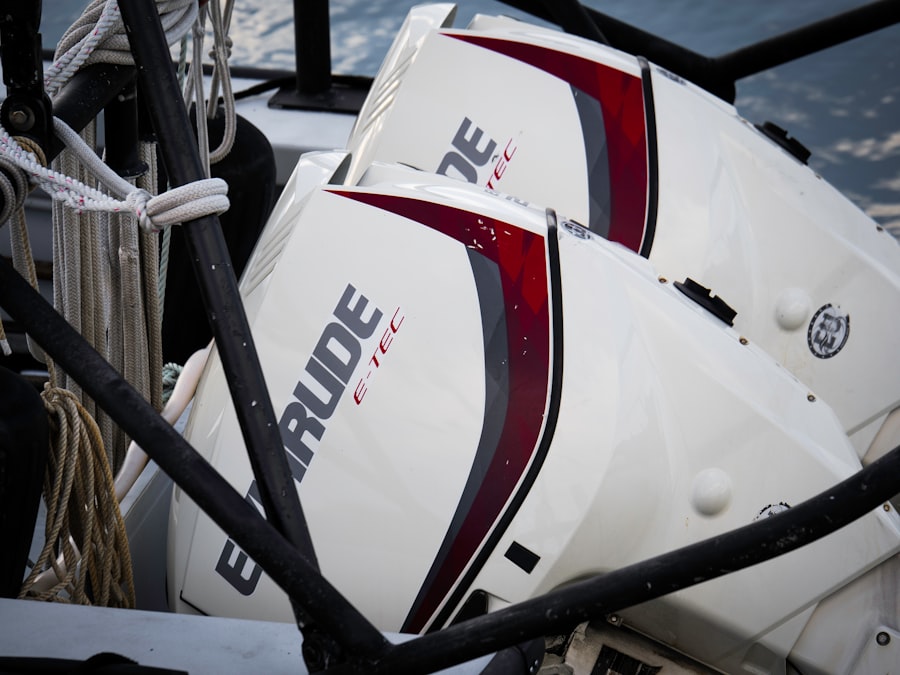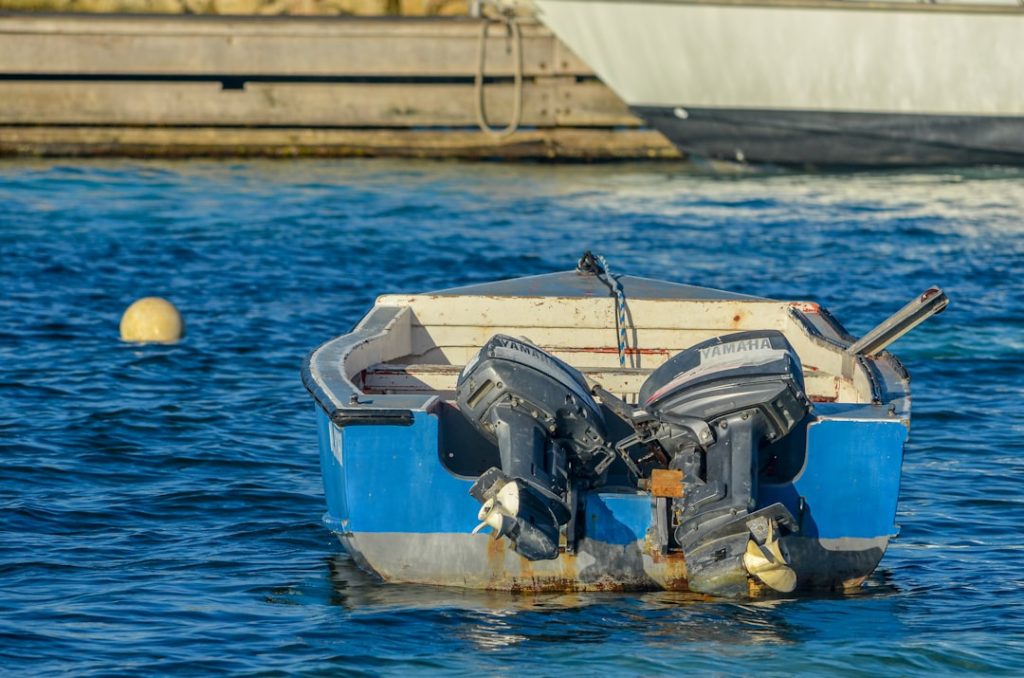Selecting a used outboard boat engine can be a prudent decision for many boat enthusiasts and casual users alike. The primary allure of purchasing a pre-owned engine lies in the significant cost savings compared to buying new. New outboard engines can carry hefty price tags, often running into thousands of dollars, which can be prohibitive for those on a budget or those who are just starting their boating journey.
A used engine, on the other hand, can provide the same level of performance and reliability at a fraction of the cost, allowing buyers to allocate their resources toward other essential boating equipment or experiences. Moreover, the market for used outboard engines is vast and varied, offering a wide range of options that cater to different needs and preferences. Whether you are looking for a small engine for a dinghy or a more powerful unit for larger vessels, the used market is likely to have something that fits your requirements.
Additionally, many used engines come with a history of maintenance and usage, which can provide insights into their reliability and performance. This information can be invaluable when making a purchasing decision, as it allows buyers to assess the engine’s condition and suitability for their specific boating activities.
Key Takeaways
- Used outboard boat engines offer cost savings and reliable performance when chosen carefully.
- Key factors include engine condition, hours of use, and compatibility with your boat.
- Quality used engines can be found through reputable dealers, online marketplaces, and marine shops.
- Thorough inspection and understanding common maintenance needs help ensure engine longevity.
- Buying from trusted dealers often includes warranties, guarantees, and professional installation support.
Factors to Consider When Buying a Used Outboard Boat Engine
When venturing into the used outboard engine market, several critical factors must be taken into account to ensure a wise investment. First and foremost is the engine’s age and usage history. An older engine may have more wear and tear, but if it has been well-maintained, it could still offer reliable performance.
Conversely, a newer engine that has seen heavy use may not be as dependable. Buyers should inquire about the engine’s hours of operation, maintenance records, and any repairs that have been performed. This information can help gauge the engine’s overall health and longevity.
Another essential factor is the type of engine that best suits your boating needs. Outboard engines come in various configurations, including two-stroke and four-stroke models, each with its advantages and disadvantages. Two-stroke engines are typically lighter and provide more power for their size, making them ideal for smaller boats or high-performance applications.
However, they are often less fuel-efficient and produce more emissions than their four-stroke counterparts. Four-stroke engines, while generally heavier and more complex, offer better fuel efficiency and quieter operation, making them suitable for longer trips or recreational boating. Understanding these differences will help buyers select an engine that aligns with their intended use.
Where to Find Quality Used Outboard Boat Engines for Sale

Finding quality used outboard boat engines requires some research and exploration of various avenues. One of the most common places to start is online marketplaces such as eBay, Craigslist, or specialized boating websites like Boat Trader or YachtWorld. These platforms often feature a wide array of listings from private sellers and dealers alike, allowing buyers to compare prices and specifications easily.
However, it is crucial to exercise caution when purchasing online; always verify the seller’s credibility and request detailed information about the engine’s condition. Local marine dealerships can also be excellent sources for used outboard engines. Many dealerships offer trade-in programs where customers can exchange their old engines for newer models.
These dealers often inspect and refurbish the engines they sell, providing an added layer of assurance regarding quality and reliability. Additionally, attending boat shows or marine expos can present opportunities to connect with reputable sellers and view engines in person. Networking with fellow boaters or joining local boating clubs can also yield valuable recommendations for trustworthy sources.
Tips for Inspecting a Used Outboard Boat Engine
| Inspection Tip | What to Check | Why It Matters | Recommended Action |
|---|---|---|---|
| Visual Condition | Look for corrosion, cracks, and damage on the engine exterior | Corrosion and damage can indicate poor maintenance or exposure to harsh conditions | Reject or negotiate price if severe corrosion or damage is present |
| Engine Hours | Check the hour meter for total run time | Lower hours generally mean less wear and longer engine life | Prefer engines with fewer hours; verify hours with maintenance records |
| Compression Test | Measure cylinder compression using a gauge | Ensures engine cylinders are sealing properly and engine is healthy | Compression should be within manufacturer’s specifications; low compression indicates engine problems |
| Fuel System | Inspect fuel lines, filters, and carburetor or injectors for leaks or clogs | Fuel system issues can cause poor engine performance or failure | Replace damaged or clogged components before use |
| Cooling System | Check water pump impeller and cooling passages for blockages or wear | Proper cooling prevents engine overheating and damage | Replace impeller if worn; flush cooling system if clogged |
| Propeller and Lower Unit | Inspect propeller for damage and lower unit for leaks or noise | Damaged propeller or leaking lower unit can affect performance and cause costly repairs | Repair or replace damaged parts; check gear oil for water contamination |
| Starting and Running | Start the engine and listen for unusual noises or smoke | Unusual sounds or smoke can indicate internal engine problems | Have a mechanic diagnose any abnormal noises or smoke before purchase |
| Maintenance Records | Review service history and repairs performed | Regular maintenance improves engine reliability and lifespan | Prefer engines with complete and consistent maintenance records |
Inspecting a used outboard boat engine is a critical step in the purchasing process that should not be overlooked. A thorough inspection can reveal potential issues that may not be immediately apparent but could lead to costly repairs down the line. Start by examining the exterior of the engine for any signs of damage or corrosion.
Look for rust spots, cracks in the casing, or any signs of oil leaks around seals and gaskets. These indicators can suggest neglect or poor maintenance practices. Next, check the engine’s components, including the propeller, lower unit, and fuel system.
The propeller should be free of dents or bends, as these can affect performance and efficiency. The lower unit should be inspected for any signs of water intrusion or damage; this area is particularly vulnerable to wear due to its exposure to water. Additionally, inquire about the fuel system’s condition—old fuel lines can deteriorate over time and lead to performance issues or safety hazards.
If possible, request to see the engine run; listening for unusual noises or vibrations can provide further insight into its operational state.
Common Maintenance and Repairs for Used Outboard Boat Engines
Owning a used outboard boat engine comes with its share of maintenance responsibilities that are essential for ensuring longevity and optimal performance. Regular maintenance tasks include changing the oil and filter at recommended intervals, inspecting and replacing spark plugs as needed, and checking the fuel system for any blockages or leaks. Additionally, flushing the engine with fresh water after each use helps prevent saltwater corrosion and buildup in marine environments.
Repairs may also become necessary over time due to wear and tear or unforeseen issues. Common repairs include replacing worn-out seals or gaskets, fixing electrical problems such as faulty wiring or dead batteries, and addressing cooling system issues that may arise from clogged water intakes or malfunctioning thermostats. Being proactive about maintenance can help mitigate these repair needs; however, having a basic understanding of common issues can prepare owners for potential challenges they may face with their used outboard engines.
Benefits of Buying a Used Outboard Boat Engine from a Reputable Dealer

Purchasing a used outboard boat engine from a reputable dealer offers several advantages that can enhance the buying experience significantly. One of the primary benefits is the assurance of quality; established dealers often have rigorous inspection processes in place to ensure that the engines they sell meet specific standards of performance and reliability. This level of scrutiny can provide peace of mind that may not be available when buying from private sellers.
Additionally, reputable dealers typically offer warranties or guarantees on their used engines, which can protect buyers against unforeseen issues after purchase. This added layer of security is particularly valuable when investing in an engine that may have hidden problems not immediately detectable during an inspection. Furthermore, dealers often have knowledgeable staff who can provide valuable insights into engine specifications, maintenance tips, and compatibility with various boat models—information that can be crucial for making an informed decision.
Understanding Warranties and Guarantees for Used Outboard Boat Engines
When purchasing a used outboard boat engine, understanding the terms of any warranties or guarantees offered is essential for protecting your investment. Warranties can vary significantly between dealers; some may offer limited warranties covering specific components for a set period or number of hours operated, while others might provide more comprehensive coverage that includes parts and labor for repairs. It is crucial to read the fine print carefully to understand what is included in the warranty and any exclusions that may apply.
In addition to dealer warranties, some manufacturers also offer limited warranties on their used engines if they have been certified by an authorized dealer. This certification process often involves thorough inspections and repairs to bring the engine up to factory standards before resale. Buyers should inquire about any available manufacturer warranties as these can add an extra layer of protection against potential defects or failures.
How to Properly Install and Maintain a Used Outboard Boat Engine
Proper installation of a used outboard boat engine is critical to ensuring its optimal performance and longevity. Before installation begins, it is essential to consult the manufacturer’s guidelines specific to the engine model being installed. This documentation will provide detailed instructions on mounting procedures, wiring connections, and fuel line installations that must be followed closely to avoid complications.
Once installed, regular maintenance becomes paramount in preserving the engine’s functionality over time. This includes routine checks on oil levels, fuel quality, and cooling systems as well as seasonal preparations such as winterizing procedures in colder climates. Regularly inspecting components like the propeller for damage or wear will help maintain efficiency while also preventing potential safety hazards during operation.
By adhering to these practices diligently, owners can maximize their investment in a used outboard boat engine while enjoying countless hours on the water.


